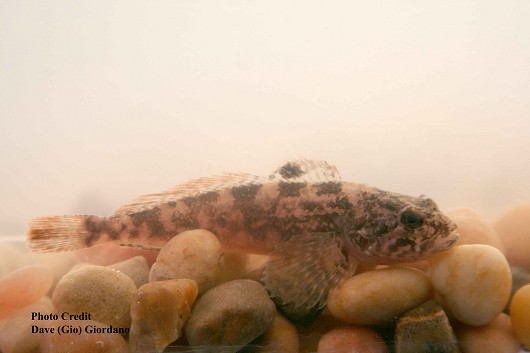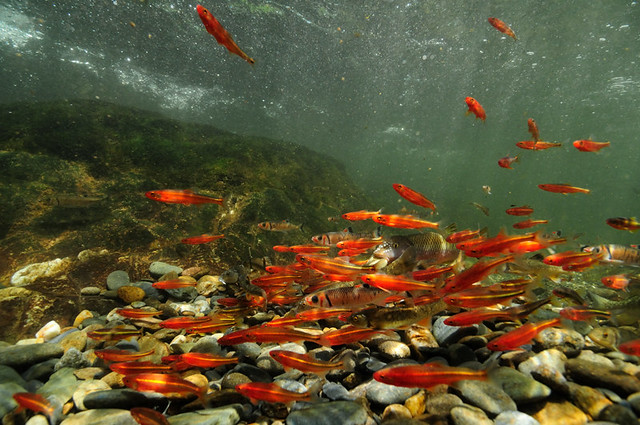 |
| Above: A Blue Catfish – one of the large river fishes prized by anglers and commercial fishermen. Photo from Wikimedia Commons. |
One bright spot in big river conservation is the recent realization that some tributaries of large rivers (smaller rivers that flow into them) can serve as a refuge from changes to the main channel and allow threatened big river fishes to hang on. A new paper by Wisconsin researchers has taken this idea and identified Mississippi River tributaries that have the best chance of providing threatened large-river fishes with a refuge. Brenda Pracheil at the University of Wisconsin and her colleagues collected distribution records of large-river specialists in tributaries throughout the Mississippi River Basin and looked at the discharge (amount of flowing water) in each to determine at what size a tributary contains the same big river fish as the main channel. The researchers then mapped out tributaries of that size and greater to figure out which streams should be the focus of conservation efforts (photo below). Adding information on the length of stream without dams helps to identify tributary sections important for big river fish like sturgeon that require a significant stretch of un-dammed river for their larvae to drift downstream as they develop. The Tennessee River, for instance, is large enough to contain big river specialists but is dammed so that its connection to the larger Ohio River is limited. The Wabash River in Illinois and Indiana also has high discharge that creates habitat for large river fishes but, unlike the Tennessee, is not dammed. Although large rivers like the Mississippi and Ohio are not completely without hope for restoration of fish faunas, the large impacts we’ve had on them and the high costs of reversing these impacts make big changes unlikely. Tributary rivers identified in this paper can serve as remnant habitat that can be more easily conserved or restored because they are managed by fewer agencies and jurisdictions.
Research that uses fish records, like the featured paper, as well as reintroduction and monitoring programs like TNACI’s work with Lake Sturgeon, and development of new tracking and monitoring technologies, as is happening at the Center for Fisheries and Aquatic Sciences at SIU, are critical for conserving these important pieces of our big river ecosystems.
Pracheil, B.M., P.B McIntyre, and J.D Lyons. 2013. Enhancing conservation of large-river biodiversity by accounting for tributaries. Frontiers in Ecology and the Environment 11: 124–128.
Post written by Micah Bennett. Micah is a Ph.D. student at SIUC currently examining the impacts of flow regime variability on fish life history and the implications of these relationships for community and ecosystem function.




.jpg)














